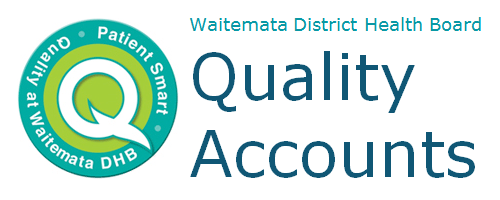
Abdominal aortic aneurysm (AAA or triple A) is a localised enlargement of the abdominal aorta such that the diameter is greater than 3cm (30mm) or more than 50% larger than normal diameter. The walls of the aorta can swell or bulge out like a small balloon if they become weak. AAAs are largely asymptomatic, but a ruptured aneurysm can be life-threatening.

What are we trying to achieve?
About 220 New Zealanders die each year from AAA. Māori are at higher risk of death but prevalence (how common this condition is) in Māori is unknown. Screening with abdominal ultrasound can prevent AAA deaths by detecting, monitoring and repairing aneurysms before they rupture. The United Kingdom (UK) and Sweden have population-based screening programme for AAA but not NZ.
The aim of this pilot was to:
- establish prevalence of AAA in Māori
- assess the acceptability of this screening test
- work out the cost effectiveness of an AAA screening programme in this population group
What have we done?
- All Māori men aged 55-74 and Māori women aged 60-74 enrolled in Coast to Coast Health Care, Waitakere Union Health Centre and Te Puna Hauora were invited to screening with follow-up support from Te Ha Oranga[1]
- Invitation, pre-screening and referral of positive patients to vascular services were the responsibility of the general practices
- Aortic diameters ≥30mm were classed as aneurysms and referred to Auckland Vascular Service
- Patients with aortas 26mm to 29mm (ectasia - dilation) were also referred to the Auckland Vascular Service for Surveillance
- Cost-effectiveness estimates were calculated with the help of the University of Otago by adapting a model developed in the UK
What did we find?
- A total of 608 patients were invited to screening with 78% attending
- The prevalence of AAA identified from screening was:
- 2.5% for men aged 60-74
- 3.9% for women aged 65-74 (the cut off point for an aneurysm was lowered from 30mm to 27mm for women based on findings from the pilot)
- The incremental cost-effectiveness ratio for AAA screening was estimated to be $21,000 per quality adjusted life year (QALY)[2]

Did we make a difference?
Screening Māori men and women for AAA is feasible, acceptable, and probably saves lives and reduces inequalities with good cost-effectiveness.
 IPANZ 2017 Finalist
IPANZ 2017 Finalist
The AAA Screening Pilot for Māori was a finalist in the IPANZ 2017 Awards for the Prime Minister's Award for Public Sector Excellence and Crown - Maori Relationships.
Where to from here?
Given the significant findings that emerged from the pilot, the AAA screening programme was extended to all Māori men (aged 60-74) and women (aged 65-74) enrolled with a GP in Auckland and Waitemata. Approximately 4,500 individuals are now eligible for AAA screening under this programme with 1800 people already screened. This has so far resulted in 90 referrals to Auckland Vascular Service and a small number of aneurysms have been repaired. These life-saving interventions demonstrate that the AAA screening programme has the potential to reduce health inequalities between Māori and non-Māori.
The AAA screening programme extension has incorporated Atrial Fibrillation (AF) screening in the same visit. The programme receives the support of a dedicated heart physiologist and cardiologist based at Auckland University. This is a significant effort to provide integrated care for Māori with a one-stop screening check-up. The introduction of AF screening is aimed at reducing stroke rates by better controlling Atrial Fibrillation with anticoagulation therapy.
The AAA team is now looking at how best a AAA screening programme could be introduced in New Zealand and targeted to all population groups. The team has paired up with Orion Health to test the feasibility of screening patients for AAA using a risk based model with existing primary health care-held data: the Precision Driven Health Programme aims to find out whether the application of machine learning/artificial intelligence methods can help identify patients at high risk of having AAA within a framework of targeted screening. This targeted screening of non- Māori is being tested at Coast to Coast Healthcare at Wellsford with promising results.
References
- Te Hā Oranga is a Ngāti Whātua organisation that provides health and wellbeing services to everyone within the Ngāti Whātua rohe (boundary)
- The quality-adjusted life year or quality-adjusted life-year (QALY) is a generic measure of disease burden, including both the quality and the quantity of life lived. It is used in economic evaluation to assess the value for money of medical interventions. One QALY equates to one year in perfect health.
